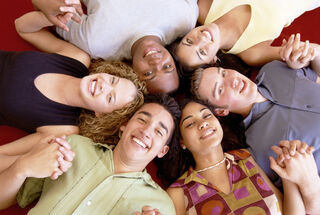Identity
Four Strategies for Becoming Multicultural
Learn how to cultivate a well-rounded personal identity through others'
Posted March 31, 2013

I often lecture on diversity issues and was recently invited to present at our university’s annual Cultural Day in the psychiatry department. I prepared a lecture on Black patients and medical mistrust, where I explain the historical and social reasons that many people of color are guarded when interacting with medical professionals. I also explain how medical professionals may make this worse by unwittingly transmitting their discomfort with ethnoracial minorities non-verbally. The end result is often a less-than-optimal interaction, causing an unsatisfactory doctor-patient relationship, poor treatment compliance, and premature termination of needed medical services. The solution for this problem: medical professionals need to become multicultural in order to help shed unconscious biases and provide the best care to their patients.
The room was filled with a mix of medical students, residents, clinical staff, and faculty. It was a tough crowd and not everyone was receptive to the message. Several trainees had difficulty comprehending how they could be participating in this undesirable dynamic, and many others just didn’t know what they needed to do to become multicultural.
Don’t be afraid. Even a child can do it!
I continue to be impressed with how my thirteen year-old daughter, Zoe, has figured out how to connect with kids of all ethnoracial groups. The middle school students often segregate themselves along racial lines, and Zoe is comfortable in any group. She recently wrote a short piece on how to become multicultural. I want to share it here to illustrate how easy and enjoyable it can be to learn about others and cultivate a truly non-racist personal identity. Her strategies appear below.
Becoming Multicultural: How to live with and love ethnic differences.
1. Make friends who are ethnically different.
It's always tempting and easy to hang out and connect with those who are the same ethnicity as you, but there are also those who speak different languages, have different colored skin, or could even be native to a different country. People like this may have trouble making friends if there aren't many others like them, but often they are really the most interesting people. Ask them questions about their culture, and talk to them about how their life may be different from yours. Share things about yourself, as well.
I remember once meeting an African girl on my school bus. We talked for a while and I learned so much about her that I wouldn't have known if I hadn't thought to say hello. She was born in one area in Africa but moved all over to different regions of Africa because of her father's career. She has several siblings, and they moved because her father found a job here and her parents were looking for a better life in the US. She has only been living here for three years but she is fluent in English language and writing, and besides that, she knew three other different African languages, including Swahili!
2. Spend time in a foreign country.
Spending time in another country is a great way to break out of your everyday way of life. It is so simple to think that the whole world is like your suburb, but the truth is that you don't know what you don't know. Things are different in ways you cannot even imagine until you have spent time in another country. I remember spending a summer in Germany one year, and the culture was different in almost every aspect! Food, clothing, technology, religion, language – and it was especially interesting to note the differences between how the typical American interacts with others compared to how other ethnic groups may act with each other.

3. Join a club or organization filled with people who look completely different than you do.
It may feel a little uncomfortable at first, being the minority in the group, but it's the best way to get a new perspective on what it's like to be a minority. Everyone else is going to have a shared cultural understanding that you just don't have. It's like when you step into a party and there's a running inside joke that everyone knows but you. It can be a little disorienting. In this case, don't let it be! With a little effort, you can acquire some of that cultural knowledge, gain additional insight on things, and use what you've learned in the group to broaden your outlook. You’ll be able to carry what you learn to other situations.
4. Visit religious services of a different faith.
There are many different religious traditions, most of which have ties to specific cultures. What a shame that Sunday is the most segregated day of the week! If you go to an all White church, try attending a Black one. If you go to a Black church, try visiting a White one. You could also get a little adventurous, and try a mosque, synagogue, or temple, if you haven't before. Learn about other cultures' worship traditions and experience of the divine. Now, I'm not saying you need to adopt another religion, but it helps to understand where other people are coming from. It contributes to a better connection and understanding of others. I believe we were made to need, love, support, and encourage not only ourselves, but those around us. Let’s start by learning about others in a new way.
by Monnica Williams & Zoe Jahn
References
Terwilliger, J. M., Bach, N., Bryan, C., & Williams, M. T. (to appear in 2013). Multicultural versus Colorblind Ideology: Implications for Mental Health and Counseling. In Psychology of Counseling, A. Di Fabio, ed., Nova Science Publishers. ISBN-13: 978-1-62618-410-7.
Shelton, J. N., Trail, T. E., West, T. V. & Bergsieker, H. B. (2010). From strangers to friends: The interpersonal process model of intimacy in developing interracial friendships. Journal of Social and Personal Relationships 27(1), 71–90.
McKinney, K.D. (2006.) ‘I Really Felt White’: Turning Points in Whiteness Through Interracial Contact. Social Identities, 12, No. 2, 167-185.


